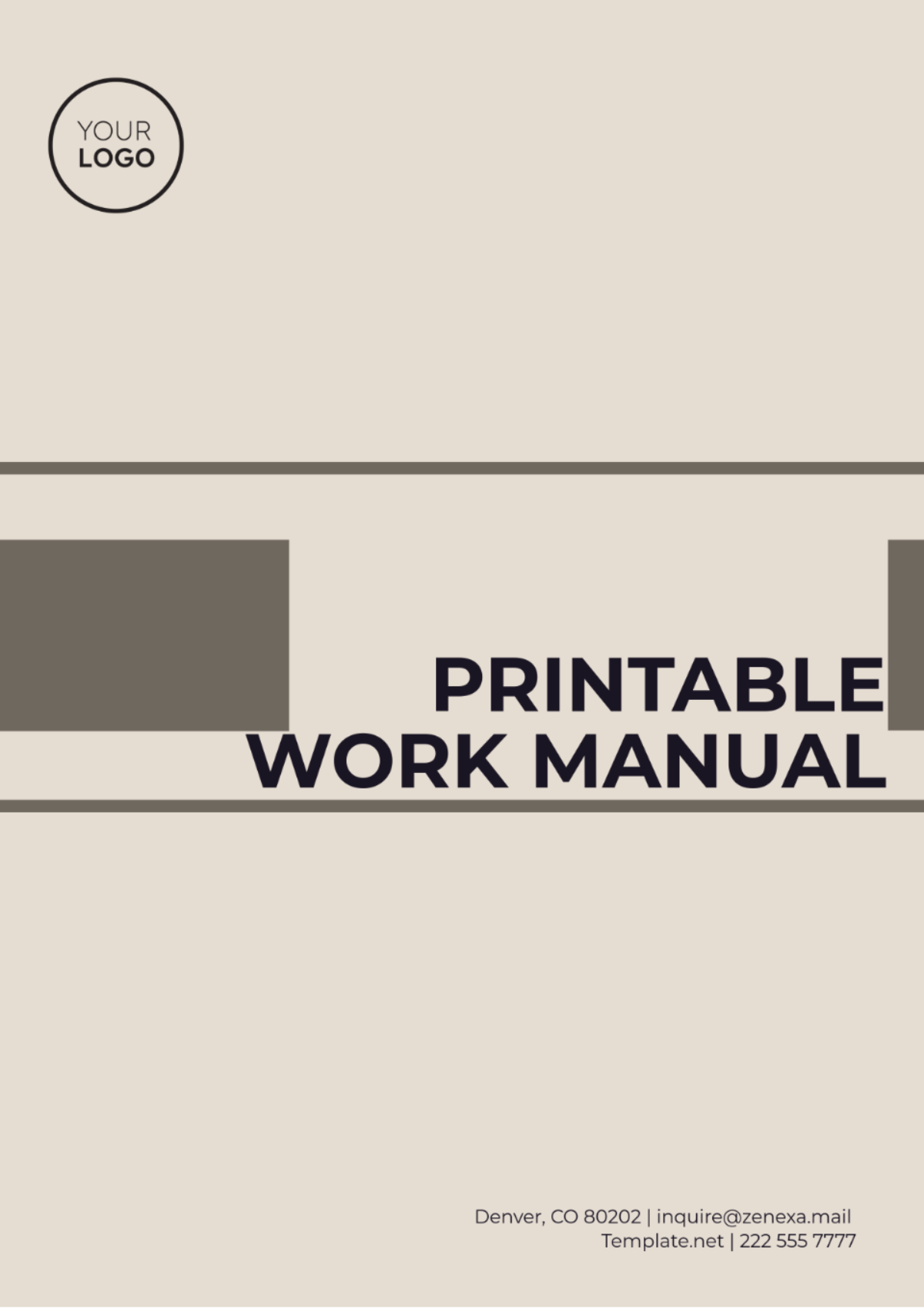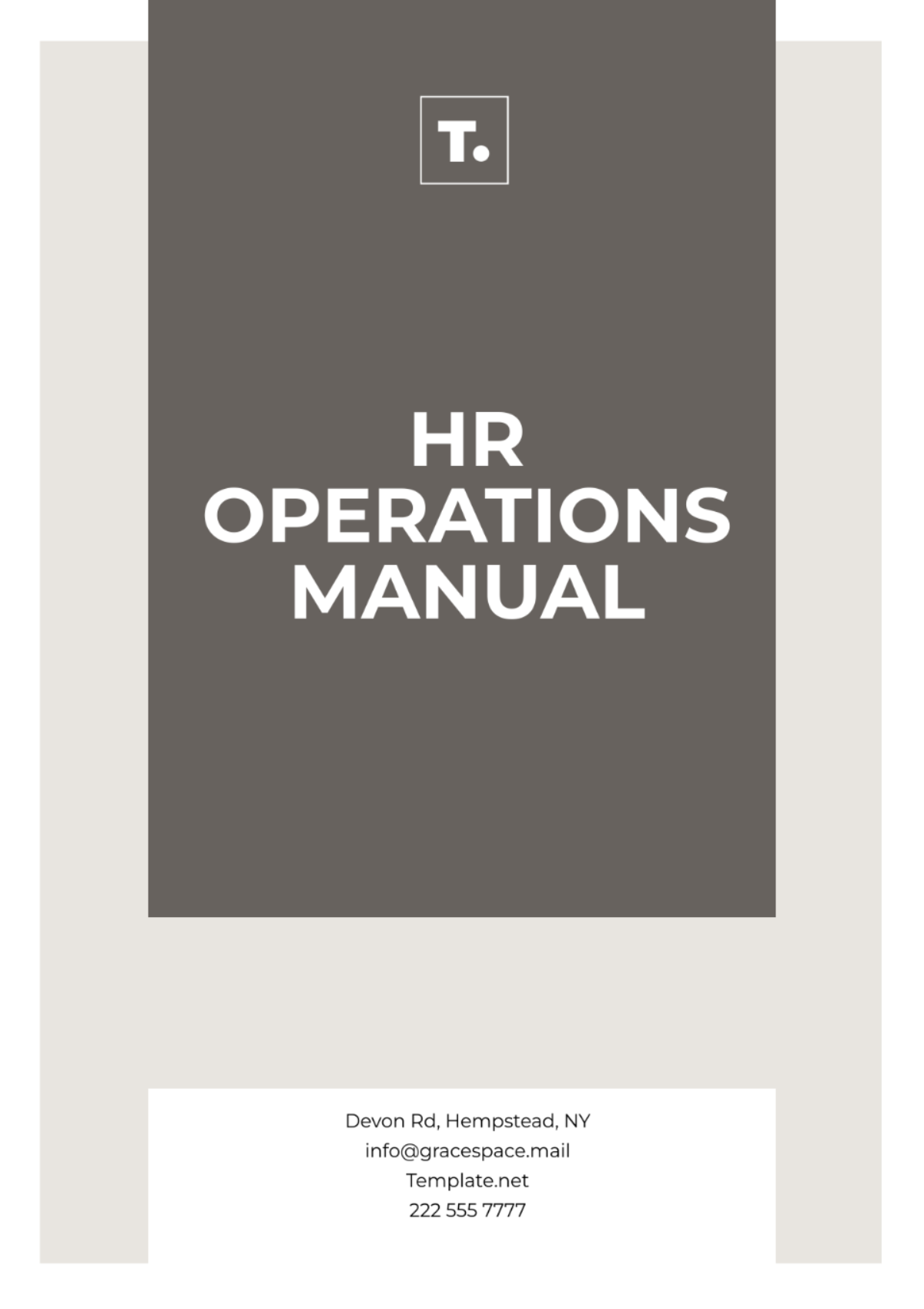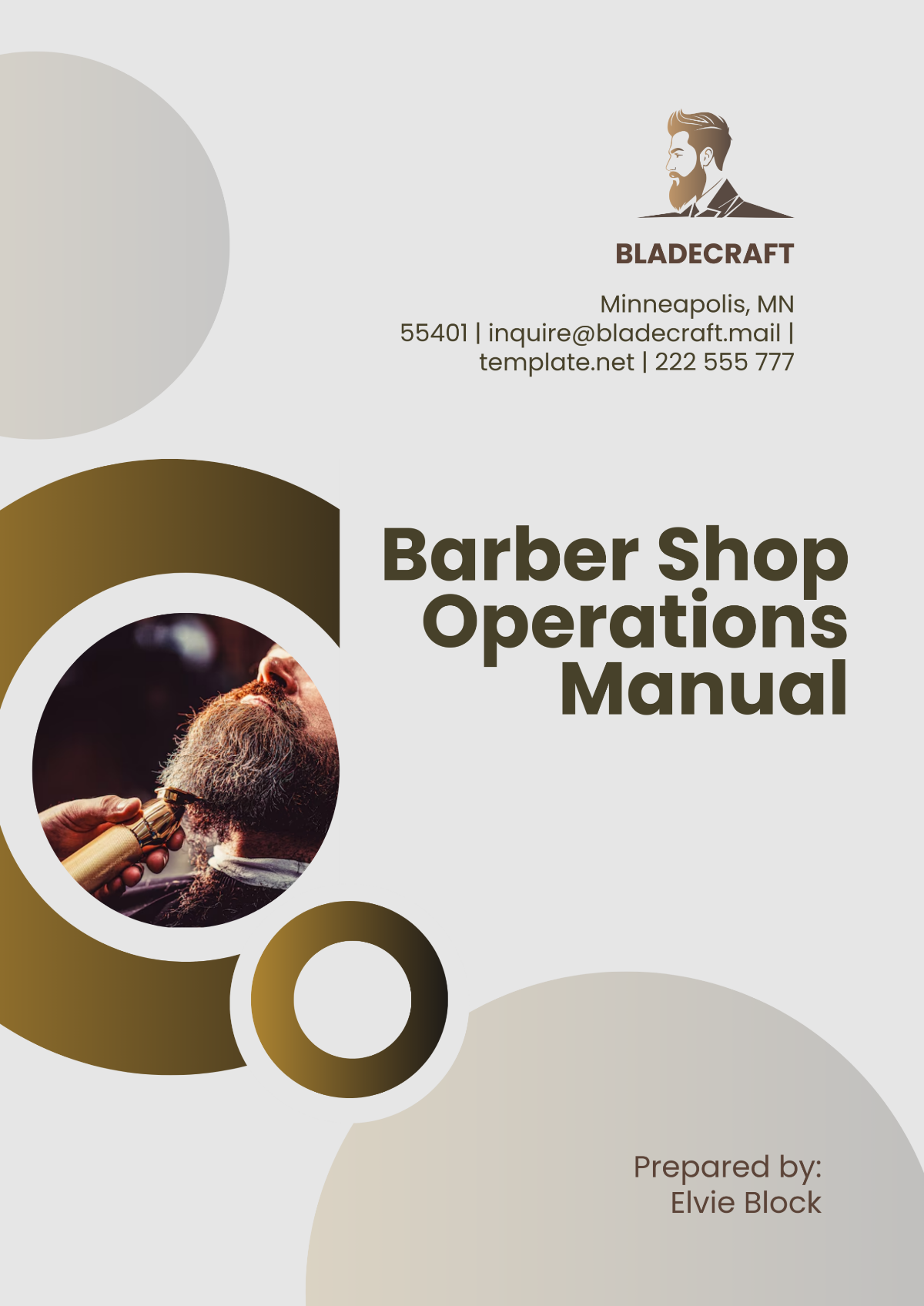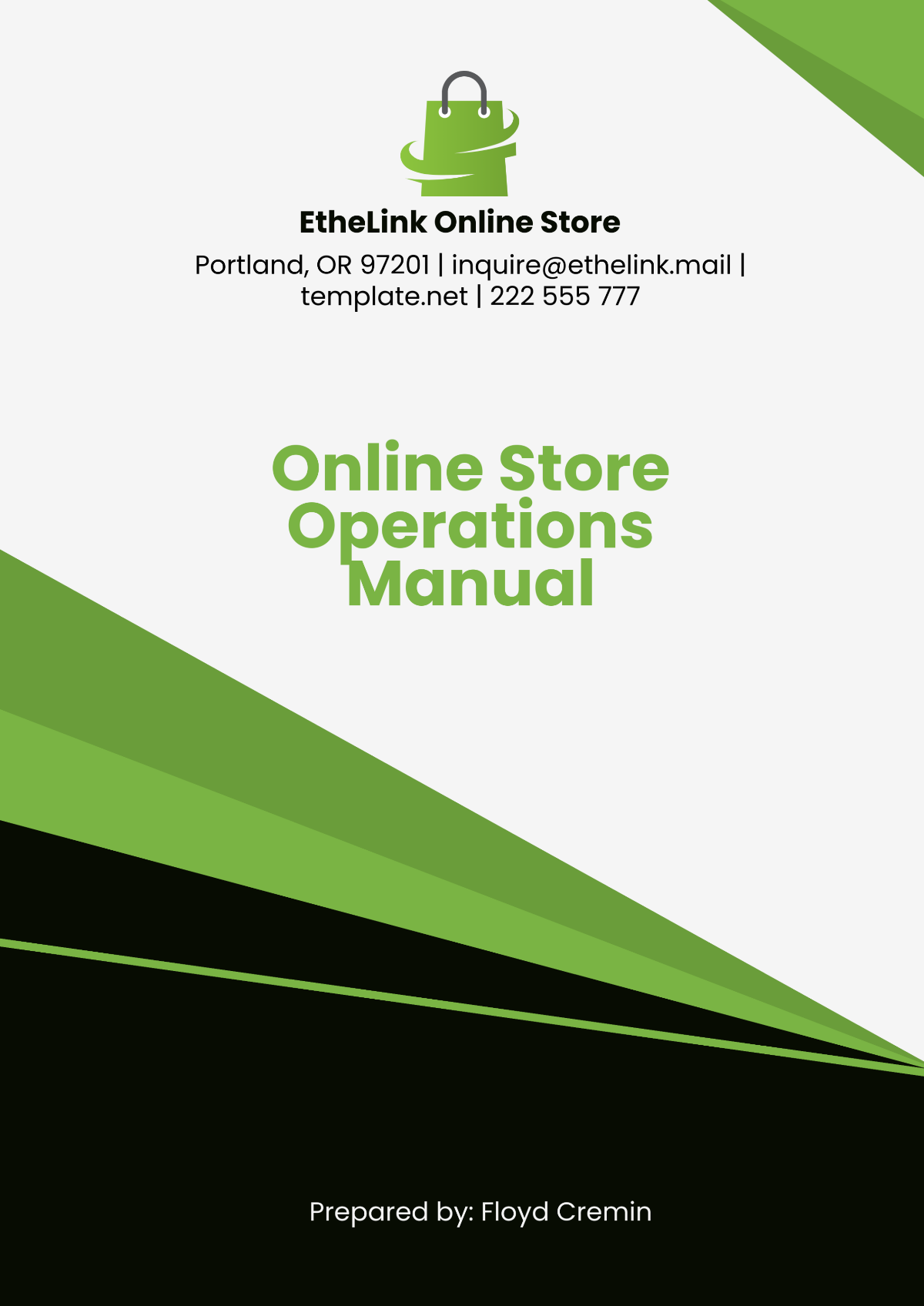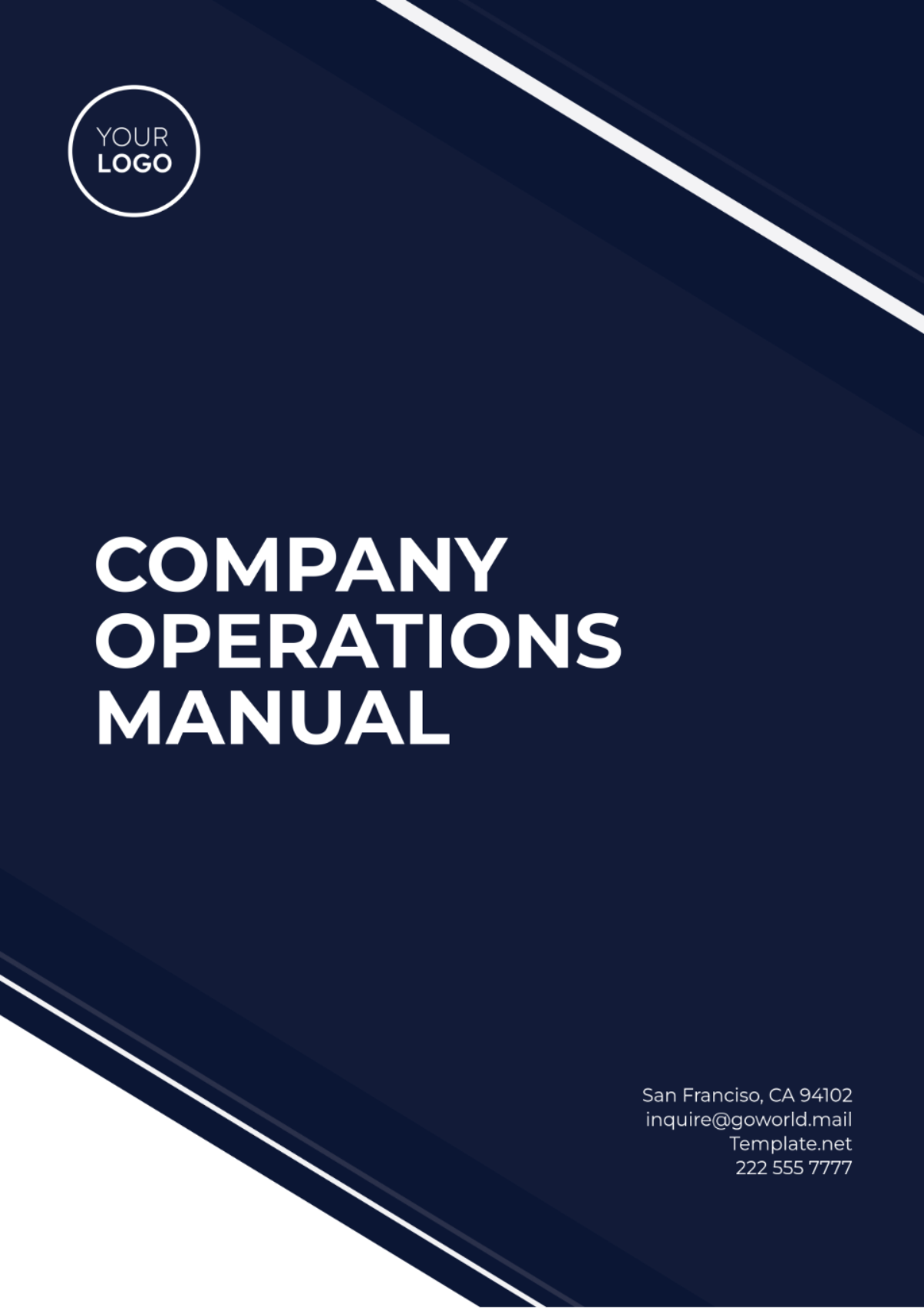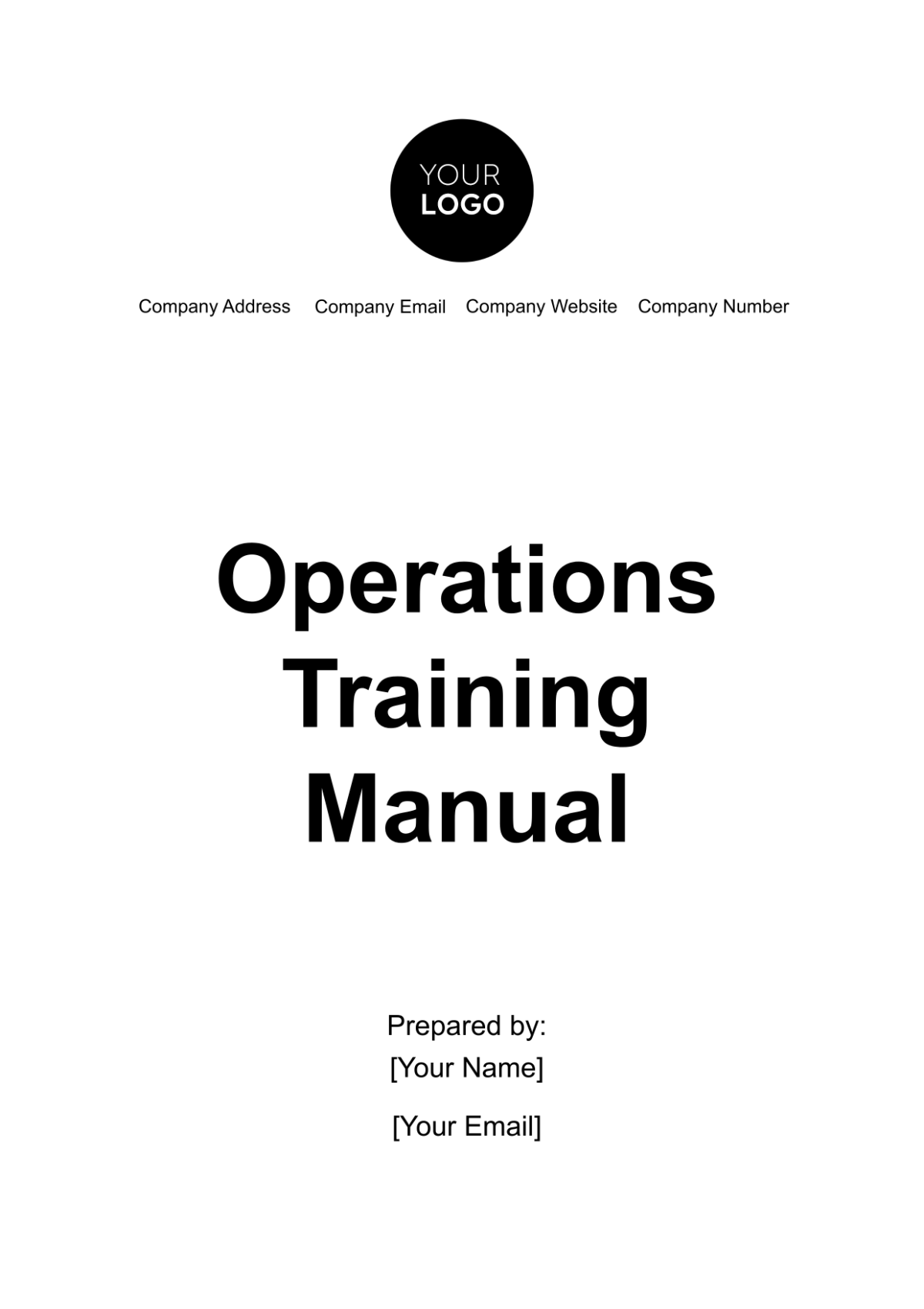Event Strategy & Operations Manual
Prepared by | Organization | Department | Date |
|---|---|---|---|
[YOUR NAME] | [YOUR COMPANY NAME] | [YOUR DEPARTMENT] | [DATE] |
I. Introduction
Welcome to the [YOUR COMPANY NAME] Event Strategy & Operations Manual. This manual is designed to provide comprehensive guidance for planning, executing, and evaluating successful events. Whether you're organizing a small seminar or a large-scale conference, this manual will equip you with the tools and strategies necessary for seamless event management.
A. Purpose
The purpose of this manual is to establish standardized procedures and best practices for [Your Department] in planning and executing events. By following the guidelines outlined here, you can ensure consistency, efficiency, and professionalism in all aspects of event management.
B. Audience
This manual is intended for use by [EVENT MANAGERS], and any other staff involved in organizing events within [YOUR COMPANY NAME]. It provides a comprehensive resource for both novice and experienced event planners, offering step-by-step instructions and valuable tips for success.
II. Event Planning
Successful events require careful planning and meticulous attention to detail. This section outlines the key steps involved in the event planning process.
A. Defining Objectives
Before embarking on any event planning, it's essential to clearly define the objectives of the event. Ask yourself what you hope to achieve, whether it's [BRAND AWARENESS], [BUILDING RELATIONSHIPS WITH CLIENTS]. Once you have a clear understanding of your objectives, you can tailor the event to meet those goals effectively.
B. Budgeting
Budgeting is a critical aspect of event planning, as it determines the resources available for each aspect of the event. Begin by estimating the total cost of the event, including expenses such as [VENUE RENTAL], [CATERING], [MARKETING MATERIALS], and [STAFFING]. Then, allocate funds accordingly, ensuring that each expense is accounted for within the overall budget. Be sure to build in a contingency fund to cover any unforeseen expenses that may arise during the planning process.
1. Budget Allocation
Expense | Estimated Cost |
|---|---|
Venue Rental | [$XX,XXX] |
Catering | [$XX,XXX] |
Marketing Materials | [$XX,XXX] |
Staffing | [$XX,XXX] |
Contingency Fund | [$XX,XXX] |
C. Timeline
Creating a detailed timeline is essential for keeping the event planning process on track. Start by identifying key milestones, such as [BOOKING THE VENUE], [SENDING INVITATIONS], and [FINALIZING THE EVENT ]. Then, assign deadlines for each task and allocate resources accordingly. Regularly review and update the timeline as needed to ensure that progress is being made according to schedule.
1. Sample Timeline
[Month 1]: Secure venue and vendors
[Month 2]: Develop event marketing plan
[Month 3]: Send out invitations
[Month 4]: Finalize event program
[Month 5]: Conduct rehearsals and final preparations
III. Venue Selection and Logistics
Choosing the right venue is crucial to the success of any event. This section provides guidelines for selecting an appropriate venue and managing logistics effectively.
A. Venue Selection Criteria
When evaluating potential venues, consider factors such as [CAPACITY], [LOCATION], [PARKING] and [BUDGET]. It's important to choose a venue that aligns with the objectives of your event and can accommodate the needs of your attendees comfortably.
B. Contract Negotiation
Once you've identified a suitable venue, negotiate the terms of the contract carefully to ensure that all details are clearly outlined and agreed upon. Pay close attention to clauses related to [CANCELLATION POLICIES], [PAYMENT SCHEDULES], and [ADDITIONAL FEES]. Seek legal advice if necessary to ensure that the contract protects the interests of [YOUR COMPANY NAME].
C. Logistics Management
Managing logistics involves coordinating all the logistical elements of the event, from [TRANSPORTATION] and [ACCOMODATION] and [ONSITE SUPPORT]. Develop a detailed plan for each aspect of logistics, assigning responsibilities to specific team members and vendors as needed. Regular communication and coordination are essential to ensure that everything runs smoothly on the day of the event.
IV. Marketing and Promotion
Effective marketing is essential for attracting attendees and generating interest in your event. This section outlines strategies for promoting your event and maximizing attendance.
A. Target Audience Identification
Identify your target audience based on factors such as [DEMOGRAPHICS], [INTRESTS], and [INDUSTRY]. Tailor your marketing efforts to resonate with this audience, using channels and messaging that are likely to capture their attention.
B. Marketing Channels
Utilize a variety of marketing channels to promote your event, including [SOCIAL MEDIA]. Each channel offers unique opportunities for reaching potential attendees, so it's important to develop a comprehensive marketing strategy that leverages multiple platforms.
C. Sponsorship Opportunities
Seek out sponsorship opportunities to offset the costs of the event and enhance its overall value. Identify potential sponsors who align with the objectives and target audience of your event, and develop compelling sponsorship packages that offer tangible benefits in return for their support
V. Event Execution
The success of your event depends largely on how well it is executed on the day. This section provides guidance on managing all aspects of event execution to ensure a seamless and memorable experience for attendees.
A. Onsite Setup and Coordination
On the day of the event, oversee the setup of the venue to ensure that everything is arranged according to plan. Coordinate with vendors, volunteers, and staff to manage tasks such as [DECORATING], [EQIPMENT SETUP], and [REGISTRATION]. Conduct a final walkthrough to address any last-minute issues and ensure that everything is in place before attendees arrive.
B. Attendee Management
Efficiently manage attendee registration, check-in, and seating to streamline the event experience. Provide clear instructions for registration and check-in procedures, utilizing [TECHNOLOGY] such as mobile apps or QR codes to expedite the process. Assign staff members to greet attendees and provide assistance as needed throughout the event.
C. Program Execution
Execute the event program according to the predetermined schedule, ensuring that each session or activity begins and ends on time. Facilitate smooth transitions between sessions, and communicate any changes or updates to attendees promptly. Maintain flexibility to accommodate unforeseen circumstances while keeping the event on track and engaging for participants.
VI. Post-Event Evaluation and Analysis
After the event concludes, it's essential to evaluate its success and gather feedback for future improvements. This section outlines the steps involved in conducting a comprehensive post-event evaluation.
A. Data Collection
Collect data on various aspects of the event, including [ATTENDANCE] and [MEDIA COVERAGE]. Utilize surveys, interviews, and analytics tools to gather quantitative and qualitative data that provide insights into the event's effectiveness.
B. Performance Analysis
Analyze the collected data to assess the overall success of the event and identify areas for improvement. Evaluate key metrics such as [ATTENDANCE NUMBERS] and [RETURN OF INVESTMENT] to gauge the event's impact and effectiveness in achieving its objectives.
C. Lessons Learned
Reflect on the event planning and execution process to identify lessons learned and best practices for future events. Document successes and challenges encountered throughout the process, and incorporate feedback from stakeholders to inform improvements for subsequent events.
Congratulations on completing the Event Strategy & Operations Manual Template. We hope this resource serves as a valuable guide for planning and executing successful events within [YOUR COMPANY NAME].
VII. Emergency Preparedness and Contingency Planning
Even with meticulous planning, unforeseen emergencies can occur during events. This section outlines strategies for preparing for and responding to emergencies to ensure the safety and well-being of attendees.
A. Risk Assessment
Conduct a comprehensive risk assessment to identify potential hazards and vulnerabilities associated with the event. Evaluate factors such as [VENUE], [WEATHER CONDITIONS] and [SPECIAL ACTIVITIES] to anticipate potential risks and develop appropriate mitigation strategies.
B. Emergency Response Plan
Develop an emergency response plan that outlines procedures for responding to various types of emergencies, including [MEDICAL EMERGENCY],
and TECHNOLOGICAL FAILURES]. Assign roles and responsibilities to staff members and establish communication protocols for coordinating emergency response efforts.
C. Communication and Notification
Establish communication channels and protocols for disseminating emergency information to attendees, staff, and relevant stakeholders. Utilize [PUBLIC ADDRESS SYSTEMS], [MOBILE APPS], and [SOCIAL MEDIA] to convey important updates and instructions in a timely manner. Designate a central point of contact to coordinate communication efforts and ensure that information is communicated effectively.
VIII. Sustainability and Environmental Responsibility
In today's increasingly eco-conscious society, it's essential for events to prioritize sustainability and minimize their environmental impact. This section provides guidance on incorporating sustainable practices into event planning and execution.
A. Sustainable Procurement
Source environmentally-friendly products and services for the event, including [RECYCLABLE MATERIALS], [BIODEGRADABLE UTENSILS], and [ENERGY-EFFICIENT EQUIPMENT]. Partner with vendors and suppliers who prioritize sustainability and offer eco-friendly alternatives for event essentials.
B. Waste Management
Implement waste reduction and recycling initiatives to minimize the amount of waste generated during the event. Provide clearly labeled [RECYCLING BINS] and [COMPOST BINS] for attendees to dispose of their waste responsibly. Work with venue staff and waste management companies to ensure that waste is sorted and disposed of properly.
C. Carbon Offset Initiatives
Offset the carbon footprint of the event by investing in [CARBON OFFSET PROJECTS] such as renewable energy or reforestation efforts. Calculate the event's carbon emissions and purchase carbon offsets to mitigate its environmental impact. Educate attendees about the importance of carbon offsetting and encourage them to participate in sustainability efforts.
IX. LEGAL AND COMPLIANCE CONSIDERATIONS
Compliance with relevant laws and regulations is essential for ensuring the legality and legitimacy of your event. This section highlights key legal considerations and compliance requirements to address during event planning and execution.
A. PERMITS AND LICENSES
Obtain all necessary permits and licenses required to host the event, including [VENUE PERMITS], [ALCOHOL LICENSES], [ENTERTAINMENT PERMITS], and [TEMPORARY EVENT PERMITS]. Familiarize yourself with local regulations and ordinances governing events to ensure full compliance and avoid potential legal issues.
B. CONTRACTS AND AGREEMENTS
Draft and review contracts and agreements with vendors, sponsors, and other parties involved in the event to clarify rights, responsibilities, and expectations. Ensure that contracts include provisions for [PAYMENT TERMS], [LIABILITY], [INDEMNIFICATION], and [CANCELLATION] to protect the interests of [YOUR COMPANY NAME] and mitigate potential risks.
C. DATA PROTECTION AND PRIVACY
Adhere to data protection and privacy regulations when collecting, storing, and processing personal information from attendees and participants. Implement measures to secure sensitive data, such as [ENCRYPTION], [ACCESS CONTROLS], and [DATA RETENTION POLICIES], and obtain explicit consent for the use of personal data in accordance with applicable laws such as the [GENERAL DATA PROTECTION REGULATION (GDPR)].
X. APPENDIX: TEMPLATES AND RESOURCES
This section provides a collection of templates and resources to support event planning and execution. From customizable checklists to sample contracts, these tools are designed to streamline the event management process and ensure consistency and efficiency.
A. EVENT PLANNING CHECKLIST
Use this comprehensive checklist to guide you through each stage of event planning, from [INITIAL CONCEPT] to [POST-EVENT EVALUATION]. Customize the checklist to suit the specific needs and requirements of your event, and use it as a roadmap for staying organized and on track.
B. SPONSORSHIP PROPOSAL TEMPLATE
Craft compelling sponsorship proposals using this customizable template, which outlines the benefits and opportunities available to potential sponsors. Tailor the proposal to align with the objectives and target audience of your event, and showcase the value proposition for sponsors to attract their support.
C. EVENT BUDGET TEMPLATE
Manage your event budget effectively with this pre-formatted budget template, which allows you to track expenses, revenue, and overall financial performance. Input estimated and actual costs for each budget category, and monitor variances to ensure that the event stays within budget constraints.
XI. Conclusion
Congratulations on completing the Event Strategy & Operations Manual Template. By following the guidelines and best practices outlined in this manual, you can plan and execute successful events that leave a lasting impression on attendees and stakeholders. Remember to adapt the strategies and resources provided here to meet the unique needs and objectives of your events, and continuously strive for excellence in event management.



